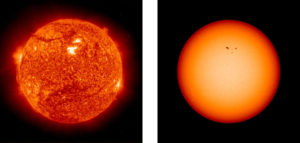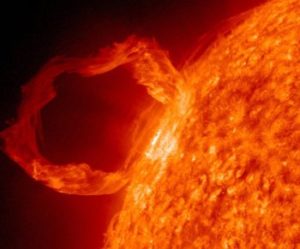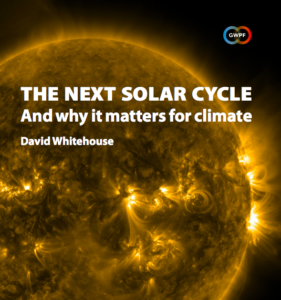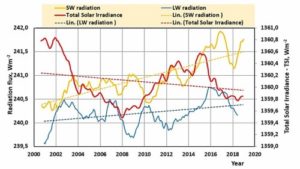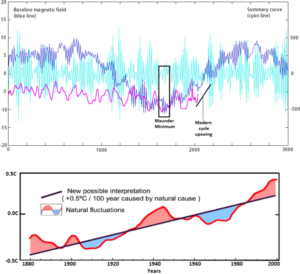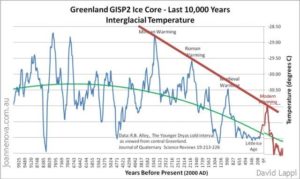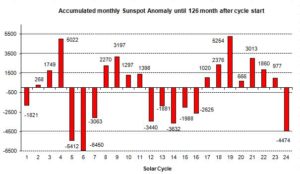by K. Richard, August 27, 2020 in NoTricksZone
During the last Grand Solar Minimum (17th century), global surface temperatures dipped to the coldest of the last 10,000 years – about 1.4°C colder than today. Dr. Zharkova, an astrophysicist, has determined another imminent drop in solar activity will lead to a 1°C cooling in the coming decades.
From 1645 to 1710, the Sun went into a quiet phase referred to as the Maunder Minimum. During this period, the “surface temperature of the Earth was reduced all over the Globe” (Zharkova, 2020). Cold summers and winters ensued, with glaciers extending onto farmland, sea ice expanding beyond the Arctic, and “frost fairs” on frozen rivers in Europe..The coldest temperatures and most expansive ice extent (glaciers, permafrost, sea ice) of the last 10,000 years occurred during both this period and the surrounding centuries – often referred to as the Little Ice Age (LIA) (Glazer et al., 2020, Geirsdottir et al., 2019).…
In a new paper, Dr. Valentina Zharkova asserts that during solar cycles 25-27, the Sun may return to a modern Maunder-like Grand Solar Minimum. This solar quiet phase is expected to substantially reduce the Earth’s solar magnetic field, which will, in turn, lead to an increase in cosmic rays extending into Earth’s atmosphere and thus an increase in high clouds reflecting the Sun’s radiation back to space.
The consequence? A reduction in global temperatures to just 0.4°C above what they were in 1710.
The role of atmospheric CO2 as a temperature-driving mechanism is not mentioned in the paper.



